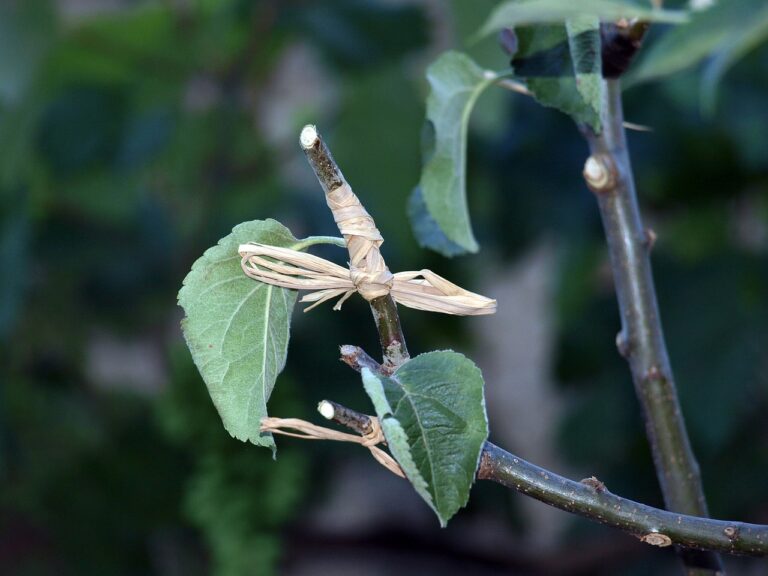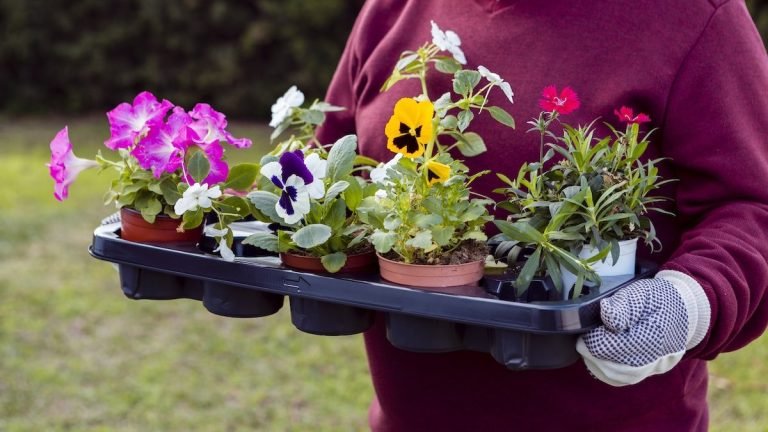The month of April, as the following aphorism states: “April has the flower and May has the honour”, is a very busy time for us gardening enthusiasts, during which it is important to set up and carry out some work in order to have the desired results during the months to come.
Now that the days are longer and more temperate, we have one more reason to spend fruitful time in our green space, perhaps even with the help of the little ones. Come on, let’s read together which jobs await us!
General maintenance
Let’s clean up flowerbeds and borders, remove dry leaves and any weeds, and prepare more for the next transplanting season by working the soil and carrying out a basic fertilisation. Cut off any dry stems, taking care not to injure the new shoots of herbaceous perennials, some of which can be gently lifted and then divided if they are too large for the space allocated, and then replanted to improve their vigour and obtain new plants! We apply granular fertiliser for ornamental flowering plants directly to the soil of flowerbeds and borders, or in pots and planters, taking care not to distribute it in contact with emerging shoots to prevent burn damage. We also fertilise trees, shrubs and hedges with a balanced slow-release fertiliser by dosing it on the area adjacent to the roots before lightly hoeing the soil surface.
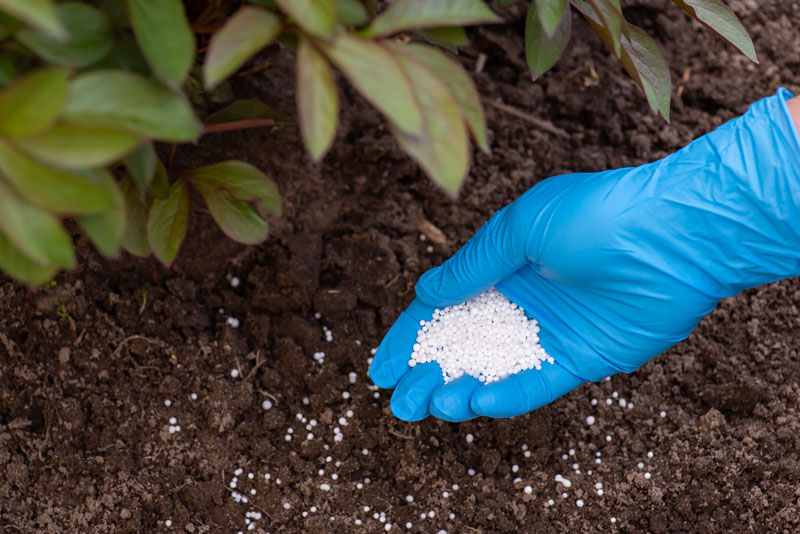
We apply new compost to pots and tubs, carefully observing the plants present to assess whether they need to be repotted, if the roots are narrow and fascicled, into larger containers, and we also water them from below to prevent fungal diseases from developing on wet foliage. We distribute a 5/8 cm layer of mulch in the rose and shrub beds to help retain moisture during hot summer days while also inhibiting weed development and improving soil structure.
There is still time to place supports and trellises for climbing plants such as clematis honeysuckles, dipladenias and sarmentose roses to allow the branches to grow and elongate. We check any supports and ties to make sure they are not cutting the trunk of trees or shrubs, so we loosen those that are too tight.
We pay attention to the possible presence of pests such as aphids on the apex of shoots or on young, tender leaves so that we can intervene promptly with specific products, preferably organic, to prevent them from multiplying rapidly in the months to come.
We check that the gutters are clean and free so that the April rains can fill the appropriately positioned water tanks. If we have a greenhouse, we clean the windows and interior surfaces, open the doors and vents during hot weather, or install automatic door openers. If necessary, we repair and treat wooden pergolas and arches with specific paints and stains for use outdoors.
Transplanting
April is a good time, if the soil is not saturated with water or still frozen, for planting shrubs such as azaleas, camellias, rhododendrons and roses, taking care to make an appropriately sized planting hole, at least one third the size of the root ball, adding balanced slow-release fertiliser and watering after transplanting. We also avoid planting new roses in areas where others were previously growing to prevent so-called replanting disease. We can plant herbaceous plants that will add colour to gardens or terraces such as begonias, marigolds, bellflowers, geraniums, New Guinea impatiens, lobelias, phlox, petunias, primroses and marigolds by keeping the soil or substrate moist but not saturated with water to prevent the development of root rot. For transplanting we always adopt a suitable planting pattern and, if we decide to make mixed arrangements, we position the new plants in bands, depending on the heights reached and the desired colour combinations. Now is the time to plant summer-flowering bulbs such as anemones, calla lilies, dahlias and gladioli by preparing the soil by digging and creating raised beds with a slight berm to improve drainage of excess water.
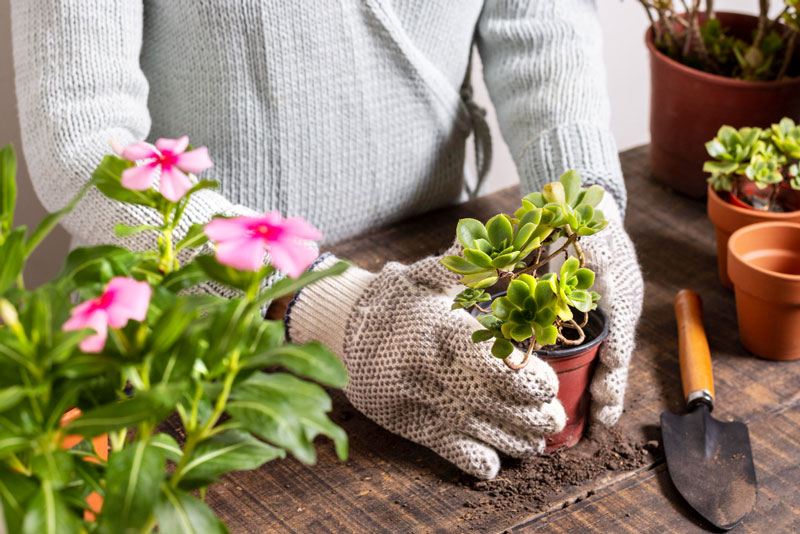
Vegetable garden
April is the perfect month for transplanting and sowing some horticultural species, always paying attention to the outside temperature trend, especially the minimum night-time temperatures. We can choose to transplant salads such as endive, lettuce, rocket and escarole, leeks, parsley, spinach and legumes such as chickpeas, beans and green beans, while we wait until the end of the month or the beginning of May for basil, cucurbits and solanaceae to avoid damage from late frosts. We always remove unwanted weeds, either manually or with a weeder, and take care to transplant on temperate soil, previously prepared by digging, fertilising, hoeing and levelling the surface. Depending on the weather, we can also plant potato tubers and sow in seedbeds both fruit vegetables such as cucumbers, tomatoes, peppers, pumpkins, aubergines and courgettes, and leaf vegetables such as cauliflowers, Brussels sprouts and celery. Let us also remember that, in suitable pots or tubs, we can also grow vegetable plants on the terrace!
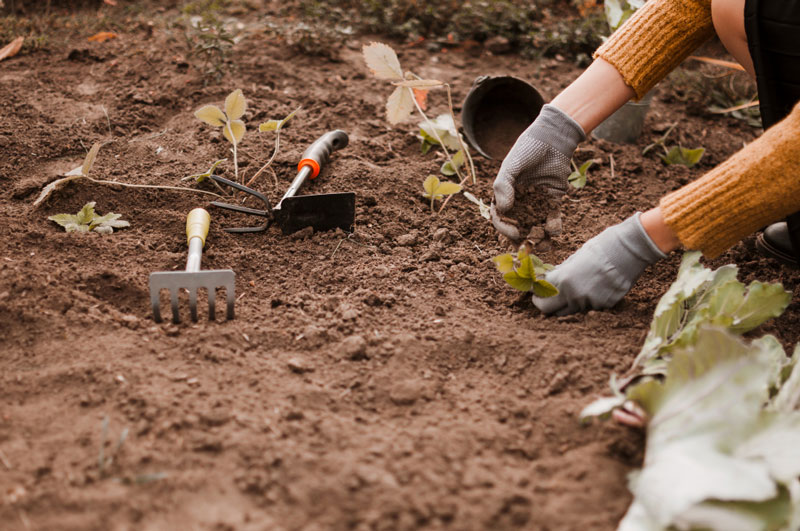
Lawn
Let’s cut the lawn, slightly lowering the mower blades to maintain a constant height throughout the year. Let’s aerate it, define its edges by edging and, if the climate is already mild, sow any damaged parts during the winter; we also distribute a nitrogen-rich fertiliser specifically for lawns without exceeding the doses.
If we then wish to create a new turf, we prepare the ground for sowing with a fork, weeding, levelling, lightly firming and taking care not to tread on the grass until it has reached a height of 6/8 cm; alternatively, for a ready effect, we lay a turf roll, keeping it moist until it has settled properly.
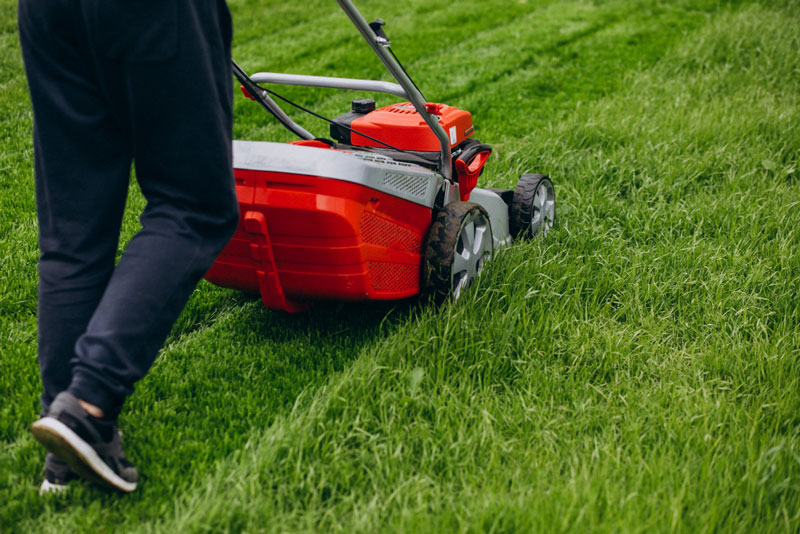
Indoor plants
During the rainy spring days we can devote ourselves to our indoor plants. Fertilise them with a specific liquid fertiliser, to be diluted in the irrigation water and distributed directly to the substrate according to suitable doses and frequencies; water them from below more regularly now that the temperatures start to rise, but always check the humidity level of the soil before intervening to prevent water saturation conditions. We move the pots to places sheltered from temperature fluctuations and draughts, and clean the leaves of any dust with a cloth moistened with water. We take the opportunity to check for the presence of pests such as aphids, mealybugs or thrips on the foliage, branches and stems, taking timely action with suitable products.
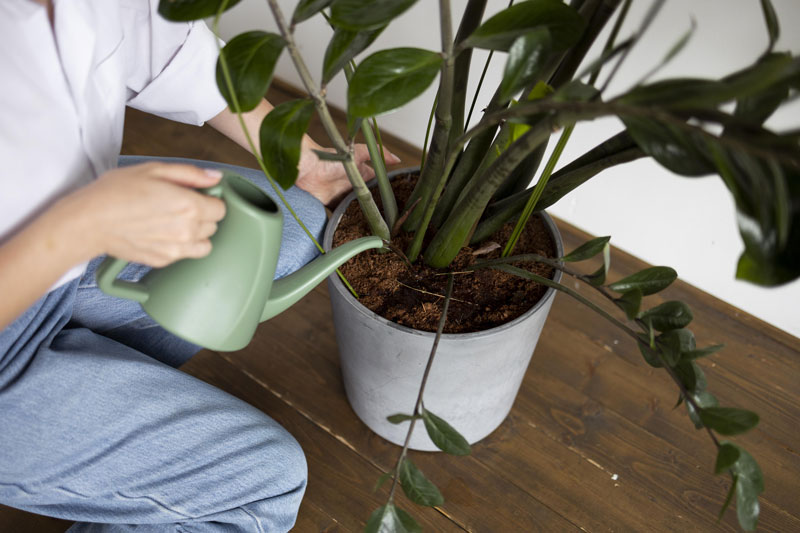
And again…
we continue to provide food and fresh water for the birds while they are busy raising their broods. We check the composting bins to see if we have compost ready for use. We remove perennial weeds from pavements and patios by weeding as part of an integrated approach to limit health damage, and we also clean walkable surfaces with a high-pressure cleaner and specific detergents. Finally, let us make sure that the irrigation system is functioning for the months to come.
In April the spring growing season begins, involving us in numerous jobs that will give us great satisfaction. Come on, let’s put on our gloves and boots and have fun!

